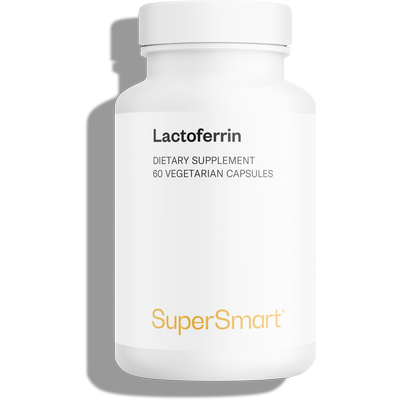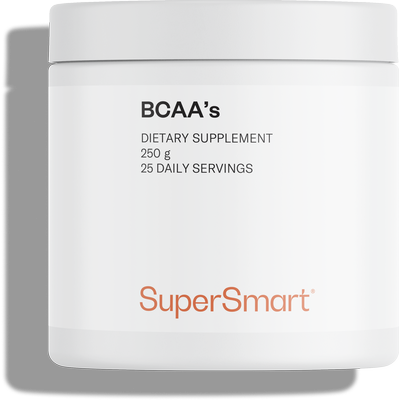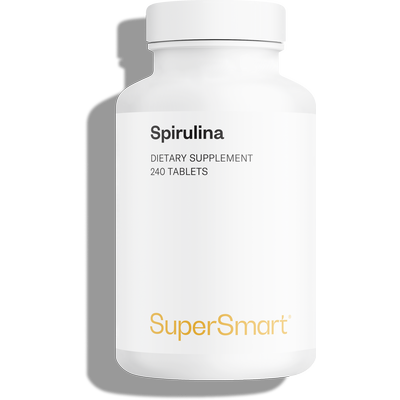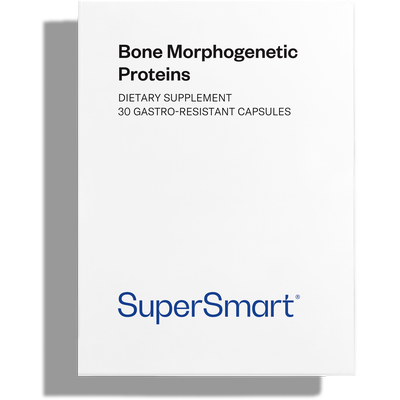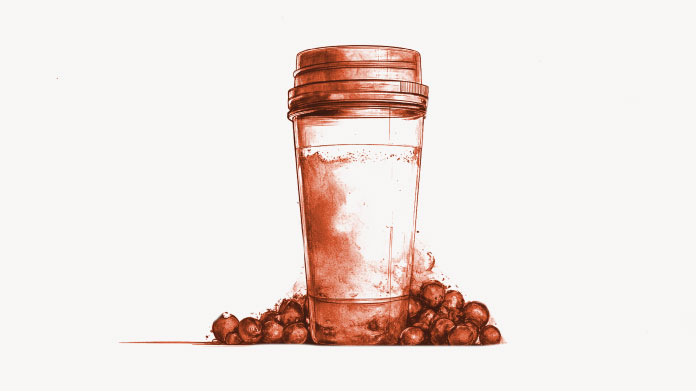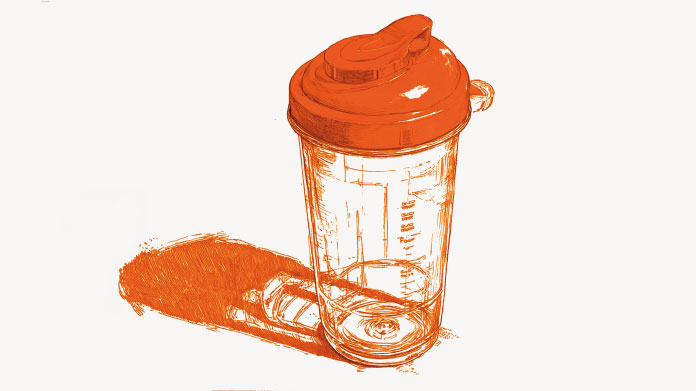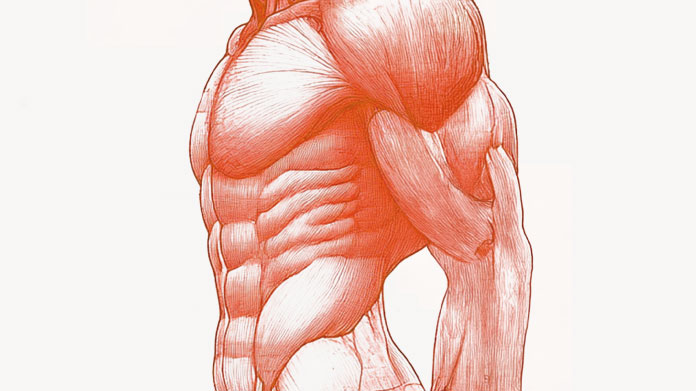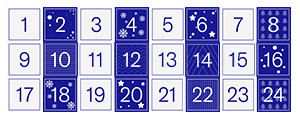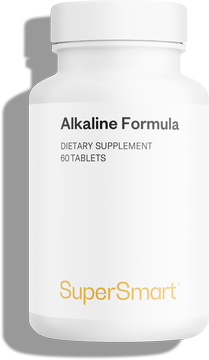Protein smoothies: how do you make them? Our 4 best recipes
Want to boost your protein intake in a fun way (without eating steak or chicken breasts)? Be part of the protein smoothie trend with these 4 ‘ready-to-use recipes.
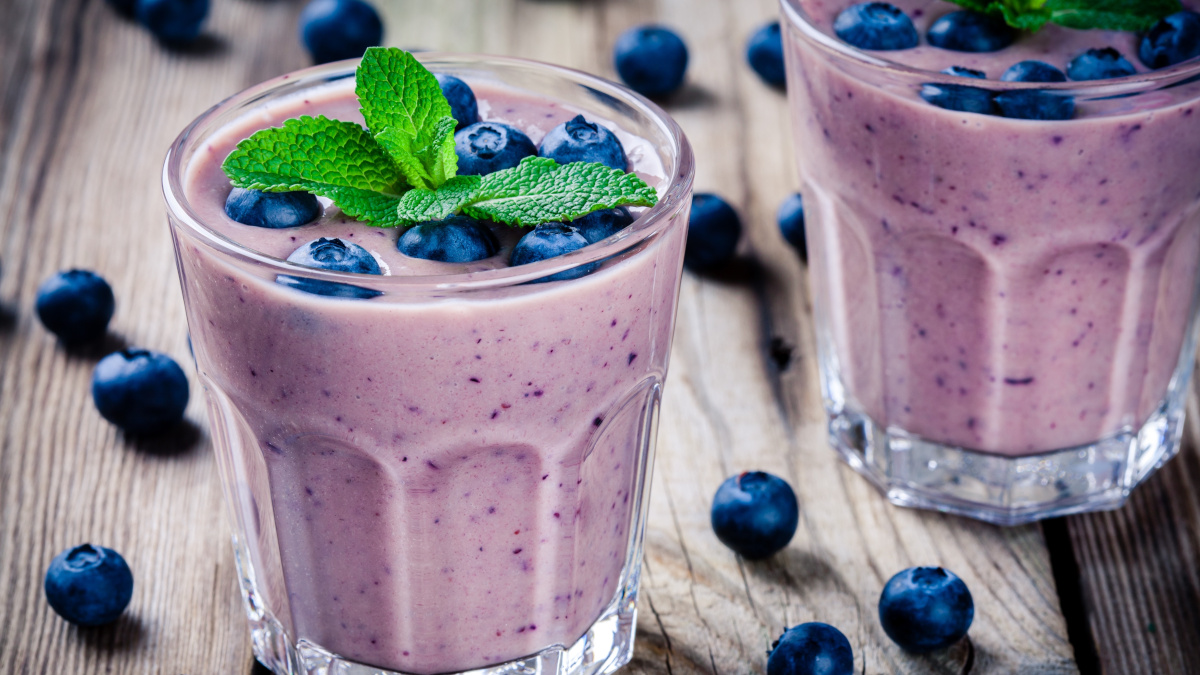
The importance of protein in the diet
Produced from amino acids, proteins form the building blocks of the body. Essential for maintaining the body’s integrity, they perform a very wide range of biological functions: structural support, biochemical catalysts, hormones, enzymes (1)…
For the general population, protein should represent 15% of daily calorie intake, that’s around 0.8g per kilo of bodyweight for an adult. This intake increases for women who are pregnant or breastfeeding (10g-15g more a day) as well as for the elderly, in whom protein turnover is less efficient (1g of protein a day per kg of bodyweight) (2).
As athletes know, protein directly contributes to increasing and maintaining muscle mass, especially when ingested before or after resistance exercise. The International Society of Sports Nutrition (ISSN) estimates that an overall protein intake of between 1.4g and 2.0g a day per kg of bodyweight is usually sufficient (3).
Protein is present in the diet in animal-source foods (meat, fish, eggs, dairy products …), soya products (tofu, tempeh…), fruits and oilseeds, as well as in whole grains and pulses(4).
Benefit of a protein smoothie
Carefully-selected ingredients, a sharp knife and a good blender - that’s all you need to make a smoothie – or ‘shake’ as it’s more commonly known in the body-building world.
Properly composed, a protein smoothie provides a substantial amount of protein to complement the day’s other protein sources, whilst also offering a range of nutrients beneficial to health (carbohydrates, vitamins, minerals, antioxidants …).
Colourful, easy to drink and to digest, it’s generally more appetising than a piece of meat for people with little appetite (during illness or convalescence, for example) or who have trouble chewing (5). Seasoned athletes can also add their protein powder supplements to it!
4 protein smoothie recipes to try
Peanut butter and banana protein smoothie
Ingredients: 1 ripe banana – 2 tbsp peanut butter – 125ml of semi-skimmed milk – 1 tsp of honey (optional)
Instructions : Peel and slice the banana. Combine all the ingredients in a blender and whizz till creamy.
Why does it work? Peanuts are among the most protein-rich oilseeds with 25g of protein per 100g (6). Cow’s milk contains 80% de casein and 20% whey, high-quality proteins which have all the essential amino acids (7). Bananas also provide B group vitamins which support energy metabolism as well as magnesium and potassium which help maintain normal muscle function (8).
Protein smoothie with whey
Ingredients: 50g of oat flakes – 30g of baby spinach – 1 cup of frozen, unthawed red berries (strawberries, blueberries) …) – 50g of fat-free Greek yogurt or skyr – 150ml of skimmed milk – 1 scoop of vanilla whey – a pinch of cinnamon powder
Instructions: Put all the ingredients (except the cinnamon) in the blender, finishing with the whey powder for a more even distribution. Blend and serve in a glass with the pinch of cinnamon.
Why does it work? The oat flakes are a source of low GI carbs popular with sportspeople for maintaining energy levels over time, as well as well-balanced plantprotein (11g/100g) (9). Extracted from whey protein, whey is one of the most popular supplements with sports enthusiasts wishing to build muscle and improve muscle recovery(10). The berries and spinach are packed with compounds that protect against oxidative processes, while also being very low in sugar and fat (11).
Whey also contains lactoferrin, a powerfully-protective protein found naturally in the body (you can take it directly via the supplement Lactoferrin) (12).
Home-made protein shake for gaining mass
Ingredients: 20 cl of coconut milk – 1-2 scoops of BCAAs – 50g of mango – 50g of pineapple – a pinch of vanilla powder – coconut chips or chia seeds (for the topping)
Instructions: Peel and chop the mango and pineapple. Mix the fruit, coconut milk, vanilla and BCAAs in a blender. Pour the shake into a bowl or glass and sprinkle with the coconut chips and/or chia seeds.
Why does it work? The BCAAs are among the most popular supplements for gaining mass, as they contain the three branched-chain amino acids (leucine, isoleucine and valine) which nourish the muscles during exercise and stop them entering a catabolic state (13). The coconut milk is is high in calories and fat (without which muscle gain is impossible). If preferred, it can be watered down for a lighter version depending on your requirement for fats.
Vegan protein milkshake
Ingredients: half an avocado – 20g of vanilla-flavoured vegan protein powder – 10g of almond puree – 5g of spirulina – 125ml of almond milk – 175 ml of water or apple juice – 5 ice cubes
Instructions: Peel and chop the avocado and place in the blender along with the protein powder, almond puree, spirulina and ice cubes. Add the almond milk and water or apple juice and blend.
Why does it work? The avocado is a good source of healthy fats (the vast majority of which are monounsaturated). But the real star of this drink is the spirulina : a perfect example of a super-food with its exceptional nutrient content, it provides a real boost to vegetarians and vegans with its abundant proteins (representing more than 70% of its dry weight) and high biological value (combining all the essential amino acids) (14). Its naturally high iron content is also worth highlighting.
If you find its slightly iodine taste unappetising in a drink, you can still benefit from spirulina’s many properties by taking a conventional supplement (the product Spirulina is produced by controlled aquaculture ensuring safe consumption in terms of heavy metal pollution).
Last but not least, the latest scientific advances suggest that bone morphogenetic proteins (combined with collagen and various growth factors in the cutting-edge formulation Bone Morphogenetic Proteins) play an active role in regenerating certain tissue such as bone and cartilage (15).
SUPERSMART ADVICE
References
- LaPelusa A, Kaushik R. Physiology, Proteins. [Updated 2022 Nov 14]. In: StatPearls [Internet]. Treasure Island (FL): StatPearls Publishing; 2023 Jan-. Available from: https://www.ncbi.nlm.nih.gov/books/NBK555990/
- Richter M, Baerlocher K, Bauer JM, Elmadfa I, Heseker H, Leschik-Bonnet E, Stangl G, Volkert D, Stehle P; on behalf of the German Nutrition Society (DGE). Revised Reference Values for the Intake of Protein. Ann Nutr Metab. 2019;74(3):242-250. doi: 10.1159/000499374. Epub 2019 Mar 22. PMID: 30904906; PMCID: PMC6492513.
- Jäger R, Kerksick CM, Campbell BI, Cribb PJ, Wells SD, Skwiat TM, Purpura M, Ziegenfuss TN, Ferrando AA, Arent SM, Smith-Ryan AE, Stout JR, Arciero PJ, Ormsbee MJ, Taylor LW, Wilborn CD, Kalman DS, Kreider RB, Willoughby DS, Hoffman JR, Krzykowski JL, Antonio J. International Society of Sports Nutrition Position Stand: protein and exercise. J Int Soc Sports Nutr. 2017 Jun 20;14:20. doi: 10.1186/s12970-017-0177-8. PMID: 28642676; PMCID: PMC5477153.
- Górska-Warsewicz H, Laskowski W, Kulykovets O, Kudlińska-Chylak A, Czeczotko M, Rejman K. Food Products as Sources of Protein and Amino Acids-The Case of Poland. 2018 Dec 13;10(12):1977. doi: 10.3390/nu10121977. PMID: 30551657; PMCID: PMC6315330.
- Best RL, Appleton KM. The consumption of protein-rich foods in older adults: an exploratory focus group study. J Nutr Educ Behav. 2013 Nov-Dec;45(6):751-5. doi: 10.1016/j.jneb.2013.03.008. Epub 2013 Jul 2. PMID: 23827439.
- Arya SS, Salve AR, Chauhan S. Peanuts as functional food: a review. J Food Sci Technol. 2016 Jan;53(1):31-41. doi: 10.1007/s13197-015-2007-9. Epub 2015 Sep 19. PMID: 26787930; PMCID: PMC4711439.
- Davoodi SH, Shahbazi R, Esmaeili S, Sohrabvandi S, Mortazavian A, Jazayeri S, Taslimi A. Health-Related Aspects of Milk Proteins. Iran J Pharm Res. 2016 Summer;15(3):573-591. PMID: 27980594; PMCID: PMC5149046.
- Nieman DC, Gillitt ND, Henson DA, Sha W, Shanely RA, Knab AM, Cialdella-Kam L, Jin F. Bananas as an energy source during exercise: a metabolomics approach. PLoS One. 2012;7(5):e37479. doi: 10.1371/journal.pone.0037479. Epub 2012 May 17. PMID: 22616015; PMCID: PMC3355124.
- Rasane P, Jha A, Sabikhi L, Kumar A, Unnikrishnan VS. Nutritional advantages of oats and opportunities for its processing as value added foods - a review. J Food Sci Technol. 2015 Feb;52(2):662-75. doi: 10.1007/s13197-013-1072-1. Epub 2013 Jun 25. PMID: 25694675; PMCID: PMC4325078.
- Duarte NM, Cruz AL, Silva DC, Cruz GM. Intake of whey isolate supplement and muscle mass gains in young healthy adults when combined with resistance training: a blinded randomized clinical trial (pilot study). J Sports Med Phys Fitness. 2020 Jan;60(1):75-84. doi: 10.23736/S0022-4707.19.09741-X. Epub 2019 Sep 23. PMID: 31565912.
- Copetti CLK, Diefenthaeler F, Hansen F, Vieira FGK, Di Pietro PF. Fruit-Derived Anthocyanins: Effects on Cycling-Induced Responses and Cycling Performance. Antioxidants (Basel). 2022 Feb 15;11(2):387. doi: 10.3390/antiox11020387. PMID: 35204268; PMCID: PMC8869496.
- Kowalczyk P, Kaczyńska K, Kleczkowska P, Bukowska-Ośko I, Kramkowski K, Sulejczak D. The Lactoferrin Phenomenon-A Miracle Molecule. Molecules. 2022 May 4;27(9):2941. doi: 10.3390/molecules27092941. PMID: 35566292; PMCID: PMC9104648.
- Jackman SR, Witard OC, Philp A, Wallis GA, Baar K, Tipton KD. Branched-Chain Amino Acid Ingestion Stimulates Muscle Myofibrillar Protein Synthesis following Resistance Exercise in Humans. Front Physiol. 2017 Jun 7;8:390. doi: 10.3389/fphys.2017.00390. PMID: 28638350; PMCID: PMC5461297.
- AlFadhly NKZ, Alhelfi N, Altemimi AB, Verma DK, Cacciola F, Narayanankutty A. Trends and Technological Advancements in the Possible Food Applications of Spirulina and Their Health Benefits: A Review. 2022 Aug 30;27(17):5584. doi: 10.3390/molecules27175584. PMID: 36080350; PMCID: PMC9458102.
- Katagiri T, Watabe T. Bone Morphogenetic Proteins. Cold Spring Harb Perspect Biol. 2016 Jun 1;8(6):a021899. doi: 10.1101/cshperspect.a021899. PMID: 27252362; PMCID: PMC4888821.
Keywords
7 Days
Delivery is prompt and I never saw a…
Delivery is prompt and I never saw a quality problem with the manufacturing. It is not possible to assess efficacy on a personal basis, since too many factors come into play. Efficacy can only be assessed statistically with a sufficient number of cases.
Roger De Backer
8 Days
I collaborates with the Supersmart…
I collaborates with the Supersmart more than 10 years. Every thing is going good. Quality of the things is good. Delivery comes in time. Five stars definitely !!!
Oleksiy
8 Days
All good
Simple, frictionless site, easy ordering, good delivery updates and execution.
Chris Robbins
10 Days
I feel better
I feel better
Peter Ammann
11 Days
Prompt delivery
Prompt delivery
JAKUB Radisch
12 Days
My new go-to for top quality supplements!
I am buying more and more of my supplements from this superb, high quality company. Cannot recommend it enough. Plus, excellent customer service with a quick, helpful team and speedy deliveries. Highly recommend Supersmart!
Cecilie H.
15 Days
SUPERSMART WHAT ELSE👍
SUPERSMART WHAT ELSE👍
DIEDERLE Christophe
18 Days
Excellent quality products with…
Excellent quality products with innovative formulas, as someone who has been suffering with acid reflux, these supplements have been lifesavers.
Oriana Moniz
18 Days
high quality supplement!
high quality supplement!
GALANT
19 Days
Good service prompt delivery
Good service prompt delivery
Mrs Marcella Reeves
24 Days
I like your clear explanation
I like your clear explanation. And how to make a choice of products for a specific health problem
Ingrid
30 Days
Great product and it arrives quickly.
Great product and it arrives quickly.
SOMMARIVA Gianni
31 Days
Excellent products and fast service.
Excellent products and fast service. What do we need more?
Margarida
35 Days
The variety of products is amazing
The variety of products is amazing, the offers are good and the sending is very fast. I just miss having a bit more of guidance about combinations, possible interactions, etc.
Maria Angeles Verdu
37 Days
It was quick
It was quick.
Timo Antero

